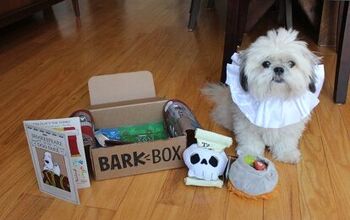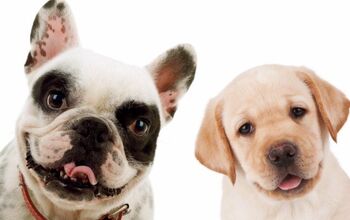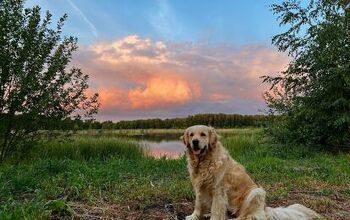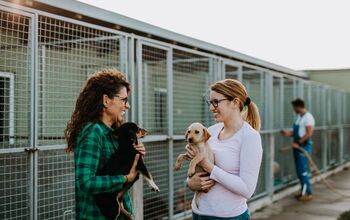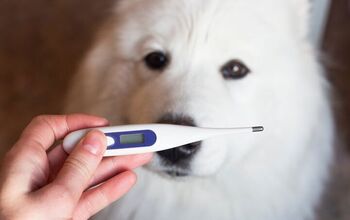Puggle


About Puggle
If you are in the market for a doggo so adorable that it will keep a smile plastered on your face for every second that you spend together, then it’s about time that you met the Puggle. Lively and full of the spunk, the Puggle is a fun-loving little clown. He’ll run around and play like he was a puppy, even long after he is all grownup! His perky attitude and spark of enthusiasm will keep the family laughing day after day. It’s like keeping a furry reservoir of joy in your home. The smiles will never stop with a Puggle in your life.
This popular designer dog was developed by crossing the flat-face Pug with the floppy-eared beagle. The combination of these two very popular dogs results in a hybrid that boasts the best that his parents have to offer, all bundled up in one adorable package. A perfect combination of popular doggos that some owners think is even better than the Puggle’s beloved parents.
The Puggle’s low maintenance coat and his ability to get much of his exercise indoors make him the perfect pet for those living in the city or an apartment building. Your Puggle will have no problem fitting into a city or couch potato lifestyle. However, he still enjoys running around outside, so the occasional trip to a dog park is an excellent idea as well. Owing to his hound genes, this cute designer dog can have a penchant for sniffing his way straight to trouble. So make sure to always keep your Puggle on a leash in unsecured areas.
A loving and social dog, the Puggle makes new friends wherever he goes. People gravitate to this little fellow and love his good-natured attitude and handsome looks. These dogs are irresistible no one can resist their charms. Probably not even you. Want to know why? Then keep your eyes glued to this page to learn more about the Puggle.
Lively and full of the spunk, the Puggle is a fun-loving little clown.
Not all designer dogs have a well-documented history or any recorded history at all for that matter. However, this popular hybrid is one of the few designer dogs with well known roots. The Puggle originated in the United States in the 1980s. Many believe that the first Puggles were the result of an accidental breeding. However, enthusiasts of this hybrid breed claim that they actually originated from a planned breeding don in the hopes of creating a new dog breed. The first person to have intentionally produced a litter of Pug-Beagle mix puppies was Wisconsin breeder Wallace Havens. He will forever be known as the proud poppa of the Puggle.
As a result of multigenerational breeding, Puggles have gained incredible popularity in the U.S. Seemingly everyone wants one of these pups. In fact in 2005, the Puggle became the most widely owned crossbreed dog in history! Keeping in mind the popularity of designer dogs and hybrids in general, this says a lot about the Puggle. These dogs didn’t get so popular by accident. They deserve and earn their love.
Puggle breeders have been working diligently to create a more standard look and temperament for the hybrid. This crossbreed is accepted by several registries. Breeders even have high hopes that the Puggle will eventually be recognized by the American Kennel Club, an organization that holds an infamous bias against designer dogs.. For now, this Pug/Beagle mix shares the fate of his other crossbreed fellows and gets no recognition from this prestigious organization. One day the AKC will finally learn to love designer pups along with everyone else, but it is not this day.
Puggles are produced by breeding a female Beagle to a male Pug. Some have tried to breed male Beagles with female Pugs, but that is a dangerous mistake. Tragically, this often resulted in the death of the puppies as well as the mother. Smaller females cannot deliver large puppies without major complications and devastating results. Few breeders would even consider this approach now and hopefully it never happens again. At this time, breeders are using Puggles to breed with other Puggles, which creates a much more standardized dog. This is known as a second generation Puggle and they are coveted by Puggle fanatics.
Even so, in the eyes of AKC and its international counterparts, the Puggle remains a mixed breed without official recognition just like all other designer dogs. Because this means that you can register a litter with official canine clubs to obtain a pedigree for Puggle puppies, reputable breeders turn to smaller organizations for certifications of good breeding. If you have adopted a Puggle puppy or an adult from a shelter, rest assured that they have an impressive family tree. That true whether you get a piece of paper or not. Both the Beagle and the Pug are breeds with a long tradition and have consistently been on top of all popular pet breeds lists. Putting them together leads to nothing less than doggo magic.
Having a nutritious and well-balanced diet set in place for your pet is one of the more important duties of every pet parent. Dogs have no understanding of nutrition. They will eat everything that you put in front of their cute little faces. So what you put in front of those faces is a big responsibility. Meeting your dog’s nutritive needs will ensure that they’re happy and healthy, while also warding off many potential health issues down the road. For a Puggle, the best diet should involve high-quality dry food that suits their unique needs. This means you should choose kibble appropriate for your pet’s age (puppy, adult, senior), size (medium) and their activity level (low to moderate).
Alternatively, you can opt for a raw food diet or cooking meals for your pet at home. Both of these options are gaining popularity with pet owners, but you shouldn’t base your pet’s complete nutrition based off guidelines you found on the internet. Canine nutrition is complex, and only a veterinarian or a vet nutritionist can tell you what your pet needs to stay healthy. Always consult one of those professionals if you have any questions about your pup’s diet. Only they will be able to assess the specific needs of your personal pup. Anything that you Google or read off of the back of a bag of dog food is only a guideline and should be treated as such.
You should be aware that one of the favorite things that Puggles enjoy doing is eating. They absolutely love to munch on everything from kibble to wet food. Unfortunately, if you let them, they will consume so much food that they easily become overweight and unhealthy. That’s why Puggles should only be fed high quality dry kibble. So, make sure to only feed them the amount suggested on the package. The meals can be broken down into two or three smaller portions, so the dog can eat several times throughout the day. But that’s as far as you should go. Puggles should never be free fed. That will only go bad places.
An intelligent crossbreed, Puggles are moderately easy to train.
An intelligent crossbreed, Puggles are moderately easy to train. They do have a tendency to be stubborn. so So, it’s important that you make their training sessions fun and interesting. Be consistent with your teaching methods, but try to mix things up as well. For instance, opt for a few shorter sessions “interrupted” with a bit of playtime. Keep them entertained and they won’t have a chance to be stubborn. It’s all about your approach.
As a rule of thumb, positive reinforcement training works wonders with these hybrids. Puggles are food-oriented so training sessions will be more productive if yummy treats are used as rewards. As everyone knows, this type of “bribe” will coax even the most stubborn pooch to pay attention to the trainer’s commands! Of course, lots of praise will also work wonders as they love to make their owners happy. Always use positive training methods when working with Puggles in obedience. Negative reinforcement or punishment based training is closer to abuse than training. It should be avoided at all costs. This crossbreed also enjoys agility training. So keep that in mind if you’re looking for an opportunity to change up your pup’s training regime.
Puggles can weigh between 10 and 30 pounds and stand from 10 to 15 inches tall at the withers.
Puggles are playful and energetic little dogs. They are affectionate and generally quite welcoming to guests and strangers that they meet walking down the street. Although they love to have fun, Puggles are some of the best cuddlers in the world. They’ll readily hop up onto the couch and snuggle up in your lap for a quick snooze. Of course, the dog will expect that you pet him while he sleeps and you’d better deliver. Puggles crave attention and make wonderful companions for families in apartments or large estates alike.
That said, there is still some bad news to share about the wonderful world of Puggles. Barking and howling seems to be a major complaint of those who own Puggles. These behaviors usually occur when the dog is left alone and it is believed to be the result of lack of exercise or separation anxiety. Digging is also a problem within this hybrid breed.
Luckily, both of these behavioral issues can be corrected with timely and persistent training. Crate training is an excellent idea, as well as leaving your pet with puzzle toys while you’re away. They’ll keep their active mind engaged and their mischievous butts out of any major trouble. It’s only when these pups aren’t stimulated that they start to get into trouble. So, make sure that your Puggle has plenty of distractions available when he is left alone.
Because Puggles are the result of a crossbreeding, they are generally healthy. There are some issues they are predisposed to such as hip dysplasia, patellar luxation, epilepsy, hypothyroidism and cherry eye. Stenotic nares is another major problem within Puggles that causes the inability to breath and can potentially be fatal. Maintaining regularly scheduled visits with your vet should help with early identification and treatment for any of these potential problems.
On the average, Puggles live to be between 10 and 15 years old.
Lively and energetic, Puggles need a fair amount of daily exercise. They enjoy going on brisk walks through the neighborhood to check out the sights and sounds around them. A fenced yard will give the Puggle a space to run and play without the chance of him getting hurt. They should never be exercised off leash as they inherit the Beagle’s chase instinct and could get lost or hit by a car. If the weather is inclement, the Puggle will be happy to play a game of fetch in the living room to burn off his energy.
Without proper exercise, this hybrid breed tends to howl and do so loudly. This could be a problem for you and your neighbors as well as end up with a visit from the local animal control agency or Home Owner’s Association. Ensuring that your dog has had plenty of exercise is a much better thing to do than pay fines or be known as the family with the annoying dog! So keep your Puggle well exercised to stay out of trouble.
Puggles are playful and energetic little dogs.
The Puggle is a crossbreed and is not recognized by the American Kennel Club. This hybrid breed can be registered with the International Designer Canine Registry and the American Canine Hybrid Club. The Puggle Club of America is still in its formative stages. They are working on creating a standard for breeders. Hopefully this will be established soon.
The Puggle’s coat is short and smooth. The fur should be straight and never wavy or curly. The colors can be white, fawn, tri-colored or black. They may or may not have a black mask however; black masks are extremely common in Puggles.
Puggles need little grooming, although they do shed moderately. A weekly brushing is plenty until it is shedding season. At this time, they need to be brushed several times weekly to remove the loose coat. Bathing should be done every month.
Puggle puppies should start being socialized with new people and pets from the time he comes home from the breeder. Encountering new things and situations are equally important. This will prevent the puppy from becoming shy and timid when he gets older.
Puppy obedience classes are important as well. These classes will help you and the puppy learn about basic manners. They are also the cornerstone for all of the things that he will need to learn throughout his life. Take this responsibility seriously when your Puggle is still a pup and you’ll have a lovably obedient partner for life.
Photo credit: Scott Schopieray/Flickr; Trisha Shears/Wikimedia; Fotos By Dee/Flickr

Amy Tokic, Editor of PetGuide.com, is a passionate animal lover and proud pet parent of Oscar, a Shih Tzu/Chihuahua cross, and Zed, a Japanese Chin. Her love of animals began in kindergarten, when she brought her stuffed dog Snoopy into class with her every day. Now, she writes about her adventures in pet ownership and tirelessly researches products, news and health related issues she can share with other animal enthusiasts. In her free time, Amy loves perusing used book and record stores, obsessing over the latest pet products available and chasing squirrels with wild abandon (a habit attributed to spending too much time with her pooches).
More by Amy Tokic








